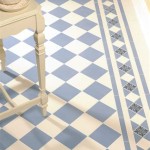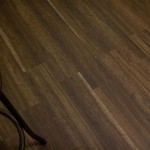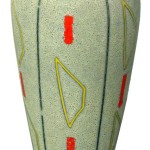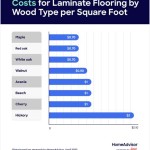Rug Grippers for Carpeted Floors: Ensuring Safety and Stability
Rugs add aesthetic appeal and comfort to any living space. However, when placed on carpeted floors, they often present a safety hazard due to slippage. This can lead to accidents, particularly for children, the elderly, and pets. Rug grippers designed specifically for carpeted surfaces offer a practical solution to this problem, enhancing both safety and the longevity of the rugs themselves. These specialized products function differently than those designed for hard surfaces, employing materials and designs tailored to the unique characteristics of carpet fibers.
The primary function of a rug gripper on a carpeted floor is to create a secure bond between the rug and the carpet pile. This bond prevents the rug from sliding or bunching during regular use. While some movement is often unavoidable, a quality rug gripper significantly minimizes it, making the environment safer and more comfortable. Furthermore, these grippers can help prevent the rug from developing wrinkles or folds, maintaining its appearance and extending its lifespan by reducing wear and tear from constant readjustment.
Understanding the Challenges of Rugs on Carpets
The interaction between a rug and carpet is inherently unstable. Unlike hard surfaces where a rug can achieve a degree of friction with a thin pad or even the floor itself, carpets present a more yielding and uneven base. The pile of the carpet allows both the carpet and the rug to move independently, exacerbating the likelihood of slippage. The type of carpet, including its pile height, density, and fiber composition, all play a role in how well a rug will stay in place. For example, a shag carpet provides significantly less grip than a low-pile commercial carpet.
Additionally, the weight and construction of the rug itself impact its stability. Lightweight rugs are naturally more prone to movement than heavier, denser rugs. The backing material of the rug is also a critical factor. Some rug backings are smoother than others, contributing to increased slippage. Environmental factors, such as humidity and foot traffic, also influence the effectiveness of rug grippers. High humidity can decrease the adhesive properties of some grippers, while heavy foot traffic can gradually dislodge the rug and gripper from its intended position.
Traditional rug pads designed for hard surfaces are generally ineffective on carpets. These pads often rely on a sticky or textured surface to grip the hard floor. On a carpet, these features become largely irrelevant as the pad simply sinks into the carpet pile without effectively gripping the rug above. This ultimately results in the rug continuing to slide, rendering the pad useless. This highlights the importance of selecting a rug gripper specifically engineered for carpeted floors.
Key Features of Effective Rug Grippers for Carpeted Floors
Rug grippers designed for carpeted floors utilize a different approach to achieve stability. Instead of relying on friction or adhesion to a hard surface, they typically employ specialized materials or designs that interlock with the carpet fibers. These features create a more secure connection, preventing the rug from shifting. The effectiveness of a rug gripper is dependent on several key characteristics.
One common approach involves using a gripper with a textured or spiked underside. These spikes are designed to penetrate the carpet pile and create a robust hold. The material of these spikes should be durable enough to withstand repeated pressure and movement without breaking or flattening. The density and arrangement of the spikes are also important factors. A higher density of spikes generally provides a more secure grip, while the arrangement should be designed to distribute pressure evenly across the rug's surface.
Another design utilizes a non-slip material that clings to the carpet fibers. These materials often have a slightly tacky or rubberized texture that enhances grip without damaging the carpet. The effectiveness of this approach depends on the quality of the material and its ability to maintain its grip over time. Some non-slip materials can lose their effectiveness as they accumulate dust and debris, requiring periodic cleaning or replacement.
The thickness of the rug gripper is also an important consideration. A gripper that is too thin may not provide sufficient cushioning or grip, while a gripper that is too thick can create an uneven surface and potentially cause tripping hazards. The ideal thickness will depend on the specific characteristics of the rug and the carpet, as well as the desired level of cushioning.
Breathability is another factor to consider. Rug grippers that are not breathable can trap moisture underneath the rug, potentially leading to mold or mildew growth. Breathable materials allow air to circulate, preventing moisture buildup and maintaining a healthy environment. This is particularly important in humid climates or areas prone to spills.
Finally, the ease of installation and maintenance is a practical consideration. Ideally, rug grippers should be easy to install and require minimal maintenance. Some grippers can be easily cut to size to fit different rug dimensions, while others may require professional installation. The ease of cleaning is also important, as dust and debris can accumulate over time, reducing the gripper's effectiveness.
Types of Rug Grippers for Carpeted Floors
Several types of rug grippers are specifically designed for use on carpeted floors, each with its own advantages and disadvantages. Understanding the different options available can help consumers choose the best gripper for their specific needs.
Spiked Rug Grippers: As mentioned previously, these grippers feature a textured underside with spikes that penetrate the carpet pile. They are typically made of rubber or plastic and offer a strong, reliable grip. Spiked rug grippers are particularly effective for preventing slippage on thicker carpets with a deep pile. However, it's crucial to ensure that the spikes are not too sharp or aggressive, as this could potentially damage the carpet fibers over time. The density and arrangement of the spikes are key to their effectiveness and minimizing potential damage.
Non-Slip Rug Pads: These pads utilize a non-slip material to grip the carpet fibers. They are often made of rubber, felt, or a combination of materials. Non-slip rug pads are generally less aggressive than spiked grippers and may be a better option for delicate carpets or those with a low pile. However, their effectiveness can vary depending on the quality of the material and its ability to maintain its grip over time. Regular cleaning may be necessary to remove dust and debris that can accumulate on the surface.
Rug Gripper Tape: This type of gripper consists of double-sided tape specifically designed for use on carpets. One side of the tape adheres to the rug, while the other side grips the carpet fibers. Rug gripper tape can be a convenient option for small rugs or areas where a full pad is not necessary. However, it may not be as effective as other types of grippers for larger, heavier rugs. Furthermore, the adhesive on the tape can potentially damage the carpet fibers if it is not removed carefully. It is important to select a tape that is specifically labeled as safe for use on carpets and to follow the manufacturer's instructions carefully.
Combination Grippers: Some rug grippers combine different features to enhance their effectiveness. For example, a gripper may have a spiked underside combined with a non-slip top surface. These combination grippers offer a balance of grip and protection for both the rug and the carpet. They are often a good choice for rugs that are prone to significant movement or for carpets that are particularly slippery.
When selecting a rug gripper for carpeted floors, it's essential to consider the specific characteristics of the rug and the carpet, as well as the level of foot traffic in the area. Choosing the right gripper can enhance safety, protect the rug and carpet, and improve the overall comfort and appearance of the living space.
Proper installation is also crucial for maximizing the effectiveness of any rug gripper. The rug and carpet should be clean and dry before installing the gripper. The gripper should be properly sized to fit the rug and positioned correctly to provide maximum support. Following the manufacturer's instructions carefully will help ensure that the gripper provides a secure and long-lasting grip.

Sugarday Non Slip Rug Gripper 20 Pcs For Hardwood Floor Carpet Tile Pad Tape Grippers

Pro Space 7 In X 1 2 0 08 Rug Pads Grippers Carpet Tape Non Slip For Hardwood Floors And Tiles 8 Pack Dtfhtp180b08 The Home

Non Slip Rug Grip Carpet Mat Grippers Anti Skid Underlay Washable Reusable Ebay

Suptree Non Slip Rug Gripper For Hardwood Floor Carpet Area Rugs Tile Pad Tape Grippers 8 Pcs

Sugarday Non Slip Rug Gripper 20 Pcs For Hardwood Floor Carpet Tile Pad Tape Grippers

Pro Space Rug Pads Grippers Carpet Tape 16 Pcs Non Slip For Hardwood Floors And Tiles Keep Your In Place Dtfhts100b16

Pro Space 16 Pieces Rug Grippers Pad No Curl Corners Or Side Bunch Rugs Gripper Hold Carpet In Place Black Dtfhtp180b16 The Home

Non Slip Corner Pads 4 Pack Black Grippers

Roberts Rug Gripper 60 Ft Indoor Carpet Tile Solid Hardwood Laminate Vinyl Tape Roll 50 588 The Home

At Home Rug Gripper 2 5 X 25 Tape







